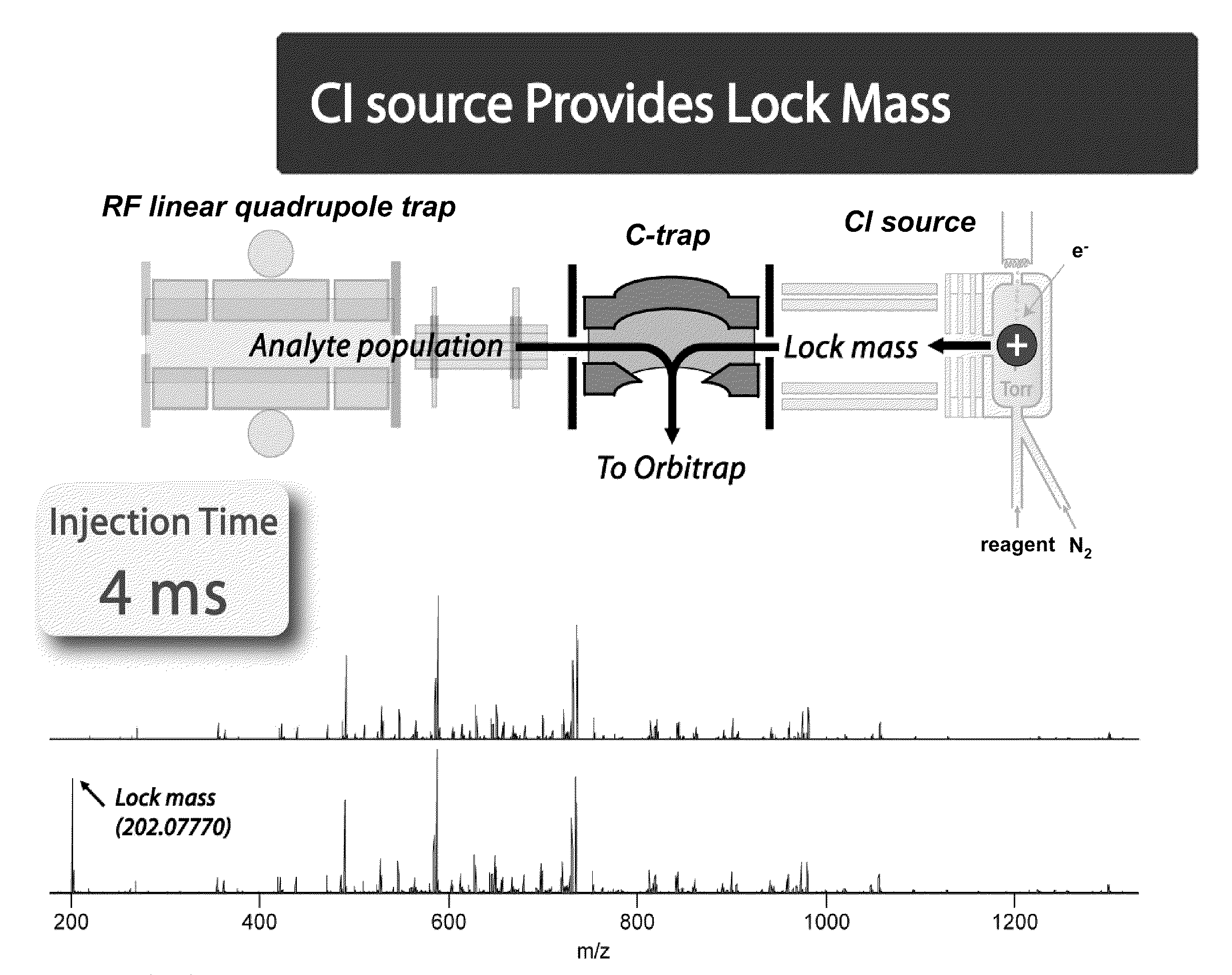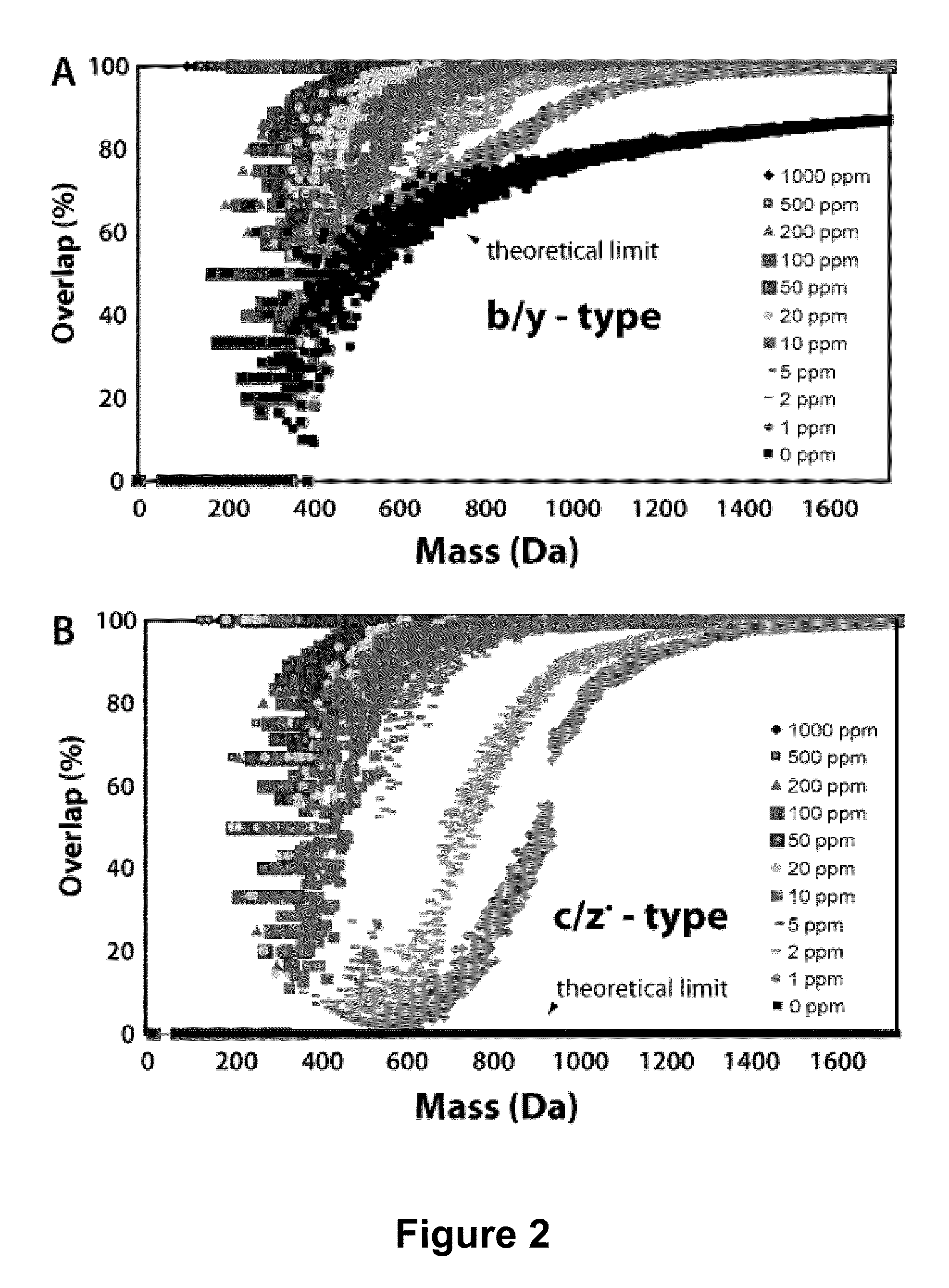Methods for Processing Tandem Mass Spectral Data for Protein Sequence Analysis
a protein sequence and tandem mass spectral technology, applied in the field of protein sequence analysis, can solve the problems of affecting real-time proteomic generation, identification and sequencing, and current state-of-the-art techniques, and achieve the effects of improving confidence and reliability of product ion identification, reliably or uniquely identifying or classifying product ions, and unique chemical composition
- Summary
- Abstract
- Description
- Claims
- Application Information
AI Technical Summary
Benefits of technology
Problems solved by technology
Method used
Image
Examples
example 1
Chemical Composition Vectors for Peptide Sequence Determination
[0074]This example demonstrates that the odd electron z*-type ions formed by the electron-based peptide dissociation methods (electron capture or transfer, ECD or ETD) have distinctive chemical compositions from other product ion types (e.g., b-, c-, and y-type ions). Specifically, b-, c-, and y-type ions have an odd number of atoms with odd valence (e.g., N and H), while z-type ions contain an even number of atoms with odd valence. This tenet, referred to as the NH parity rule, mandates that no c-type ion shall have the same chemical composition, and by extension mass, as a z*-type ion. With experiment we demonstrate that nearly half of all observed c- and z*-type product ions resulting from 226 ETD product ion spectra (collected at a mass accuracy of 2 ppm) can be assigned to a single, correct, chemical composition and ion type by simple inspection of the m / z peaks (chemical composition vector, CCV). The CCVs provide: ...
example 2
Sequencing Via Database Searching
[0122]Although the methods provided herein are useful for de novo sequencing, they may also be used with database searching. This example illustrates a relatively simple database identification technique. Because we determine chemical composition and use that as an index in our databases, we can do a simple query to compare candidate or putative chemical compositions with those calculated in a database. We use a database formed from calculating a trypsin digest of yeast proteins. Because some of the OMSSA discovered peptides included missed cleavages, we supplement those to the database. Finally, we exclude all peptides longer than 50 amino acids. This left a total of 205,091 peptides. Next we calculate every possible ion fragment of these peptides (by chemical composition—there were only 42,962), keeping track of which peptides could produce which fragments (e.g., identical fragments are produced by different peptides). Finally, we scored each pepti...
example 3
Amino Acid Sequencing
[0125]An example of sequence determination from detected fragments or a mass spectrum of c- and z-type fragments is provided in FIG. 20. Based on complete identification from nine of the twelve possible fragments (e.g., the entries that are not crossed out), the discovered sequence is [I / L]GR[I / L]VMR. OMSSA identified six possible sequences but the only one that had a good score (E=3.91695E-07), was IGRLVMR. [I / L] represents a well-known issue with de novo sequencing in mass-spectrometry: Leucine and Iso-leucine have the same chemical formulas, differing only in the arrangement of the atoms—it is not possible to distinguish them by mass alone. The data shows that some fragments are eliminated as too close to adjacent masses, not compatible with the other identified fragments, or as having a negative number of N and H. Some of the fragments are uniquely identified (see entry for R). The sequence obtained from the experiment summarized in FIG. 20 may be repeated f...
PUM
 Login to View More
Login to View More Abstract
Description
Claims
Application Information
 Login to View More
Login to View More - R&D
- Intellectual Property
- Life Sciences
- Materials
- Tech Scout
- Unparalleled Data Quality
- Higher Quality Content
- 60% Fewer Hallucinations
Browse by: Latest US Patents, China's latest patents, Technical Efficacy Thesaurus, Application Domain, Technology Topic, Popular Technical Reports.
© 2025 PatSnap. All rights reserved.Legal|Privacy policy|Modern Slavery Act Transparency Statement|Sitemap|About US| Contact US: help@patsnap.com



